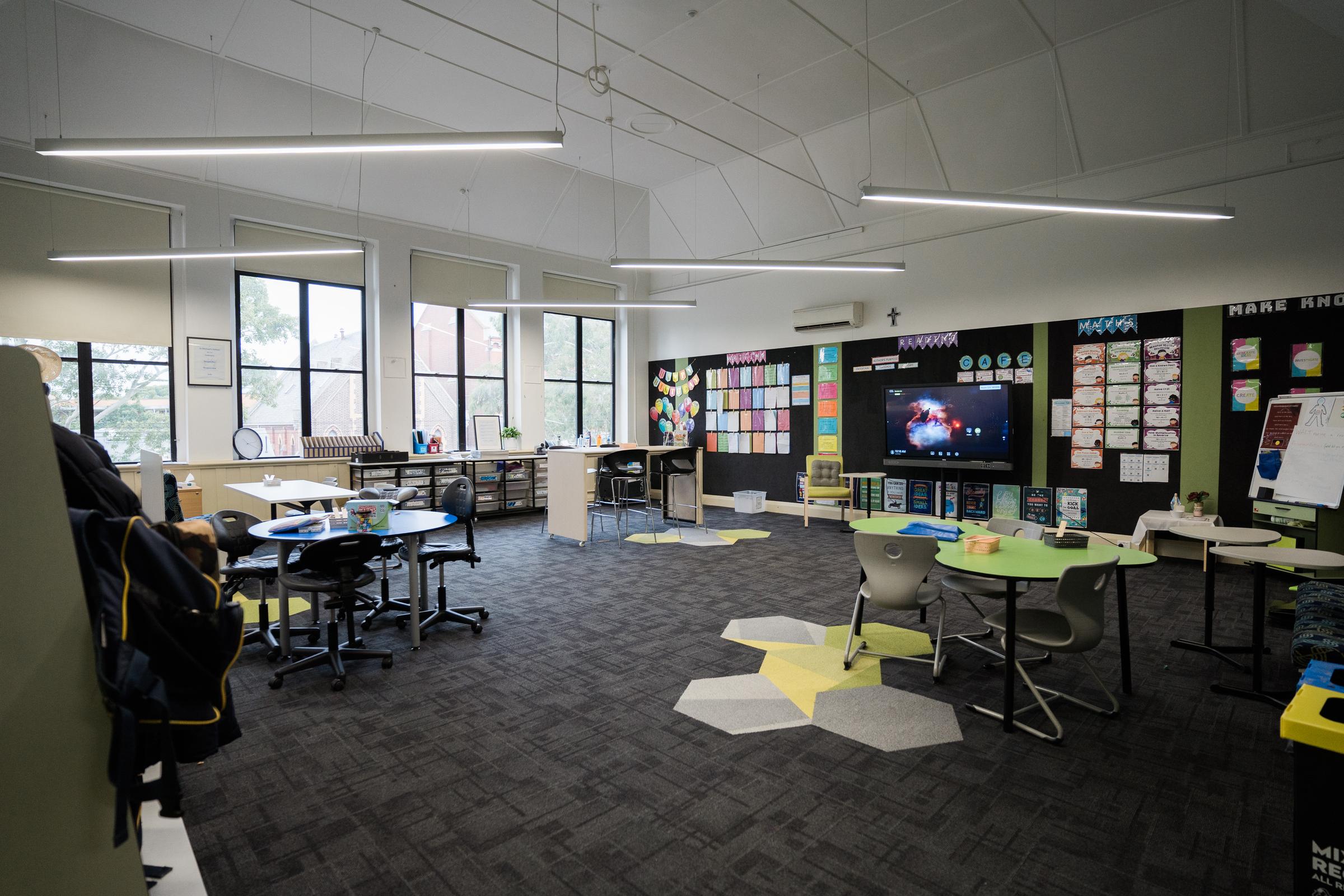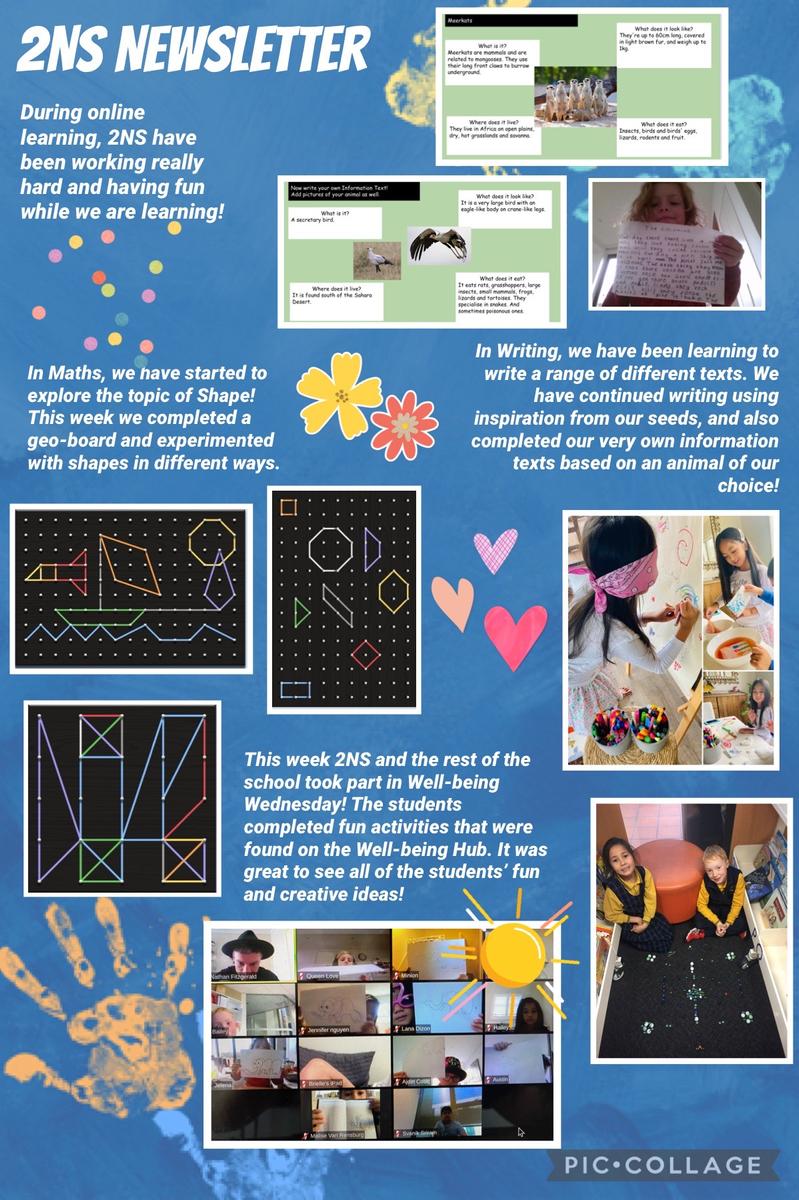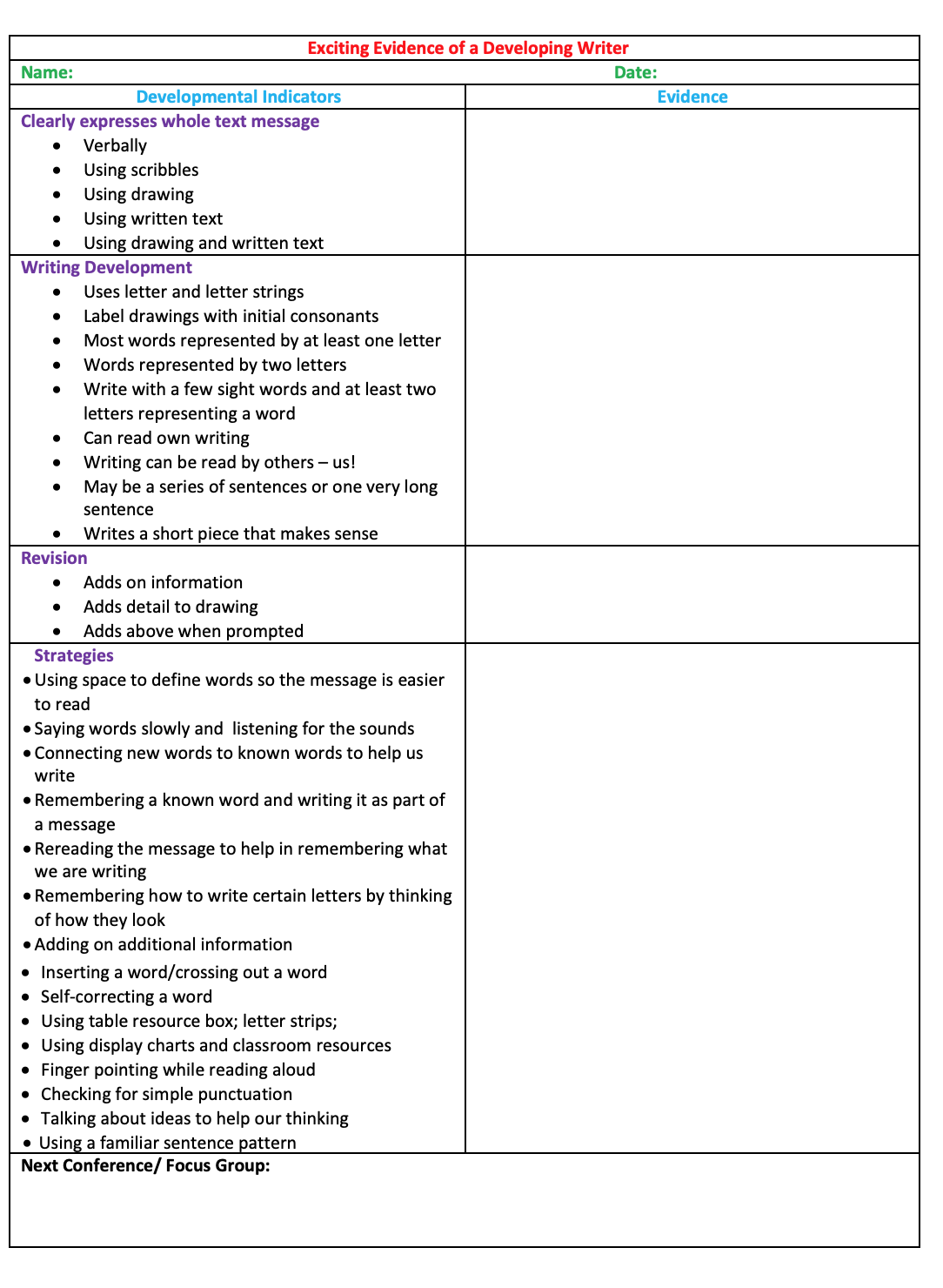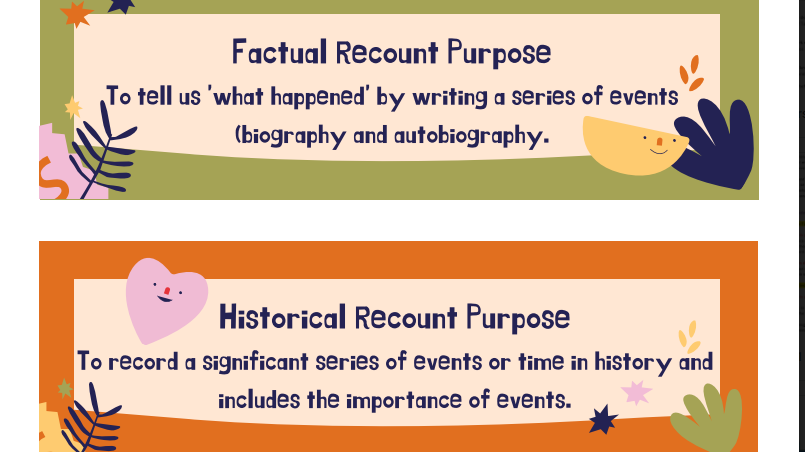Learning News
2NS and Literacy

Learning News
2NS and Literacy


Writer's Workshop Professional Learning
We were so fortunate to have squeezed in (between lockdowns) 2 days of professional learning about the craft of writing with Deb Sukarna.
We drilled down our understanding about the writing routines we have begun to put in place so that there are consistent practices from Prep to Year 6.
What does Writer's Workshop look like in Prep to Year 2?
Thinking is writing!
"By thinking aloud the educator makes it obvious what the practices are for generating ideas and organising sentences and words in a text. Thinking aloud allows the educator to demonstrate more effectively how the writer should apply skills, knowledge, processes and strategies when writing." (Fellowes & Oakley (2014, p. 449))
Each Writer's Workshop (lesson) starts with lots of talking, allowing students the time to think about their purpose for writing. You might be aware that students have brought in 'seeds' from home. These items/artefacts spark and inspire discussions. Teachers model the thinking that is stimulated from an item for example a photo of family. This can make us think about the people in our lives who are really important, or a time that we shared with a sibling, or a favourite thing we do with our family or perhaps a holiday! Children are then ready to write about their thinking.
Daily conference groups allow teachers to work strategically with children, assisting them to make sure that their thinking is clear on paper. Here, the teacher 'hunts for the good', highlighting the strengths in children's writing.
Teachers support children to get their thinking on paper, blend and segment words, refer to lists for high frequency words and can suggest drawings to support the writing. While this is in progress, the teacher takes notes about the skills the children demonstrate in their writing. These developmental writing indicators (see below) are then attached to the work and put into a folder we call the 'Writer's Gift'.


Your child will bring their Writer's Gift home at the end of the year. It will be a celebration of their thinking in the written form. In time, we will use these in parent teacher chats to demonstrate evidence of the skill development in writing.
Included in the Writer's Gift are samples of writing that children complete independently, along with the writing indicators, which exemplify the child's skill development.
In Year 2, once children's writing has demonstrated consistent skills in the writing indicators, they then transition into the writing routines in Years 3-6.
What does Writer's Workshop look like in Years 3-6?
An important component of the Writer's Workshop is the Writer’s Notebook which ‘creates a place for students (and writers) to save their words—in the form of a memory, a reflection, a list, a rambling of thoughts, a sketch, or even a scrap of print taped on the page. (Buckner, 2005, p.4)
The notebook serves as a means to encourage young writers to value writing, where ‘seeds’ for a longer writing project require revisiting and rereading to locate ‘a phrase, a paragraph, a page’ which might be expanded and developed. (Calkins, 1994, pp. 38-39)
Seeds - artefacts from home and/or seed walls - photos of broad concepts such as space, mammals, sport, friendship, can also be used as provocations. Once again, children are supported to talk about their thinking so that their purpose for writing is very clear. Thinking about what they would like the reader to feel, think or act and then choosing a purpose for writing that best suits their thinking is crucial as it will influence the writing structure.
Purpose for writing include explanations, expositions, literary descriptions, information reports, factual descriptions and news stories among others.


Once again, daily conference groups allow teachers to work strategically with children, 'hunting for the good', highlighting writing skills from a strength model.
Children then follow the routines to refine each piece of writing. The routines includes looking at their writing at Whole Text Level, Sentence Level and Proofreading/Editing.
Collaboratively in a conference group, teacher and children examine a piece of writing and use the questions to highlight strengths, and give suggestions as to ways to improve parts of the writing that needs refining.
Whole Text Level
Is the message/purpose for writing clear?
Who is the audience?
Is the message strong and makes sense?
Are the ideas in order?
Is the structure of the purpose for writing clear?
Does the writing flow?
Once there is evidence of refining at Whole Text Level, the next routine is at
Sentence Level
Have I used the best words I can?
Have I checked sentence beginnings?
Have I checked topic sentences in paragraphs?
How could I rewrite my sentences to make them more interesting and varied?
How does my word choice make my reader feel?
Are there any words I have overused?
Have I used descriptive language?
The final routine before publication is
Proofreading/Editing
Have I started at the last word and read backwards carefully looking at each word?
Have I underlined any part of a word that does not sound right as I read it?
Have I checked for punctuation (capital letters, commas, quotation marks etc)
Can I improve my writing with additional punctuation?
All published pieces of writing will go into the Writer's Gift which you will receive at the end of the year.
We hope this gives you some insight into our learning journey, and we look forward to continuing to share our Writer's Workshop practices with you over the next term.
Rita Totino
Learning and Teaching/Literacy Leader